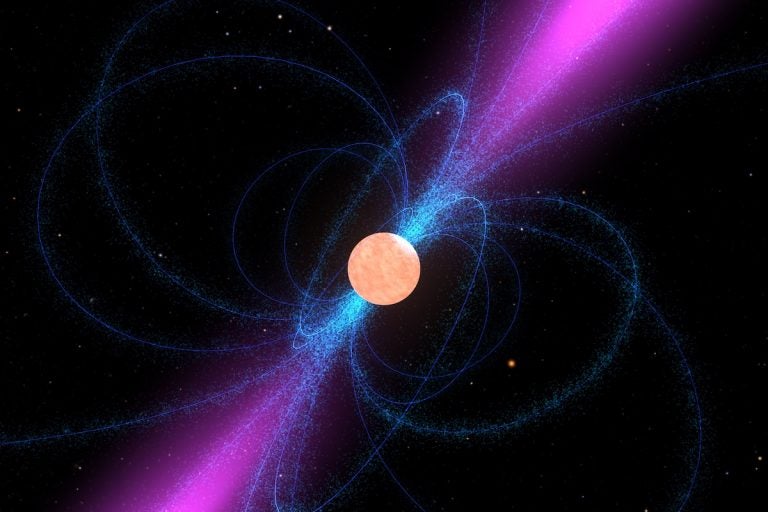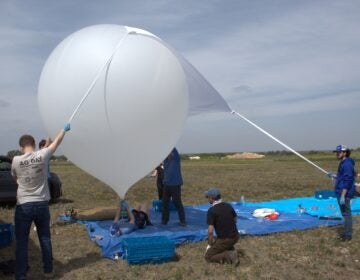Sun Day
Listen 06:12
Image: NASA
Our sun, some 865,000 miles in diameter, rotates once every 30-35 days or so; fairly normal for a star like ours.
Contrast that with an example of a neutron star (aka pulsar) – a mere 12.5 miles in diameter – that rotates once every 1.4 milliseconds, or 42,960 times every minute!
Typically pulsars emit electromagnetic radiation in beams that emanate from their magnetic poles, much like a coastal lighthouse has s weeping rotting beam.
To0 detect a pulsar, its beam has to be pointed in our direction and we have to have equipment capable of detecting what look like incredibly quick pulses of radio waves.
The Milky Way’s YOUNGEST pulsar, Kes 75, is a mere 500 years old, 19,000 light years away and its expanding nebula has wind fronts racing away at 2 million miles/hour.
WHYY is your source for fact-based, in-depth journalism and information. As a nonprofit organization, we rely on financial support from readers like you. Please give today.




